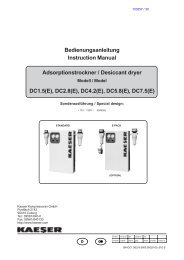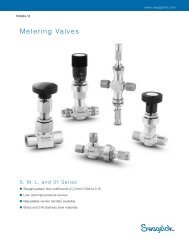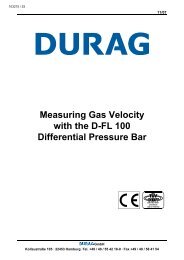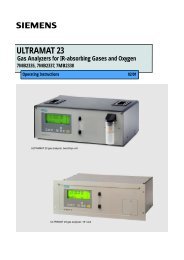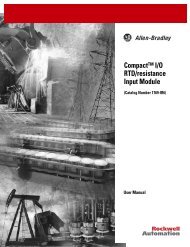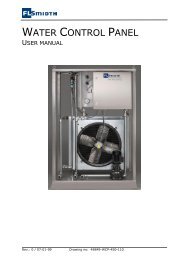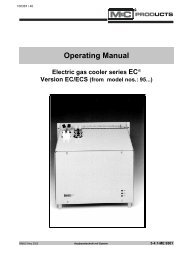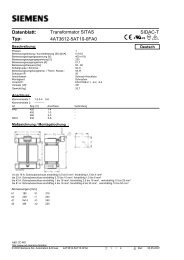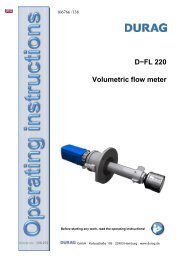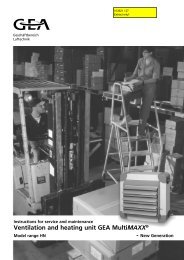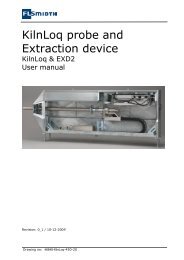HM 1400 TRX Total Mercury Analyser - Webshop, Gas Analysis ...
HM 1400 TRX Total Mercury Analyser - Webshop, Gas Analysis ...
HM 1400 TRX Total Mercury Analyser - Webshop, Gas Analysis ...
- No tags were found...
You also want an ePaper? Increase the reach of your titles
YUMPU automatically turns print PDFs into web optimized ePapers that Google loves.
4. Theoretical foundations4 Theoretical foundations4.1 Operating principle and mode of operation of thesubassembliesFunctional principleProbe Sampling Line ThermocatalyticReactorChiller3-way ball valvePre-FilterSample <strong>Gas</strong> Pumpdhm<strong>1400</strong>tr_01_001UV-Photometer∆PPFlow MeterAbsolute Pressure MeterFigure 4.1: Schematic diagram <strong>HM</strong> <strong>1400</strong> <strong>TRX</strong>iodizedA-Coal FilterDuring total mercury analysis, in addition to the elemental metallic mercury allionic mercury compounds occurring in the flue gas are also measured. So thatthe detector can photometrically detect the mercury, all mercury flowing intothe measuring device must be converted into elemental, i.e. atomic mercury.This function is performed by the catalyst at a preset operating temperature.The measuring gas is dried with a compressor or Peltier cooler before thephotometric determination of the mercury concentration; the system pressureand the measuring gas temperature are recorded at each measuring point.The determined concentration is output as current signal 4...20 mA inaccordance with the set measuring range in µg/Nm³ (dry). The internal PLCperforms the measuring value calculation and monitoring of the devicefunctions. Dusts contained in the flue gas are collected on a heated sinteredmetal filter at approx. 180°C.4.2 The thermocatalytic reductionThe matrix of black dots (see Figure 4.2: Operating principle of thethermocatalytic reduction) symbolises the reactor material.Various chemical substances that are contained in the flue gas flow into thereactor. The gas components are displayed in colour as follows: colours red(elemental mercury Hg 0 ), orange (ionic mercury Hg n+ ), green (sulphur dioxideSO 2 ), blue (hydrochloric acid HCL and chlorine Cl 2 ) and turquoise (nitrogenoxides NO x ). This small selection of chemical substances serves only to clarifythe mode of operation of the reactor and could be supplemented by many<strong>HM</strong> <strong>1400</strong> <strong>TRX</strong> 33



